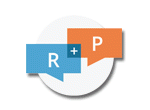How can assessments be designed to engage students in the range of science and engineering practices?

Why It Matters To You
- Teachers should frequently engage students in formative assessments related to classroom learning goals. These task formats can provide concrete ideas about how to do that.
- District Staff & PD Providers should support teachers in designing, testing, and refining assessments that reflect three-dimensional science learning goals.
- School Leaders should encourage and provide time for teachers to develop, use, and refine assessments related to the three-dimensional view of learning
What Is The Issue?
The new vision for K-12 science education calls for engaging students in three-dimensional science learning. This approach requires us to figure out new ways to assess student learning across these multiple dimensions—including the eight science and engineering practices. But there aren’t many assessments tasks that require students to apply their understanding of core ideas using practices. In this tool, we describe how to use “task formats” to guide the development of such items. The formats can also spark ideas for designing classroom instruction.
Authors:
BY PHILIP BELL, KATIE VAN HORNE, BILL PENUEL & SHELLEY STROMHOLT - MARCH 2016
Reflection Questions
- Do task formats raise questions about what it means to grasp a particular practice? Consider reviewing the NRC Framework.
- Do your scenarios allow students to engage meaningfully in a broad range of practices? How do the task formats help you design different components?
- How can you best integrate an assessment task with instruction that includes learning activities and formative assessment components?
Things to Consider
- An assessment system. Students will need multiple—and varied— assessment opportunities to demonstrate their competence on the performance expectations for a given grade level. A system of assessments will be required: classroom assessments, monitoring (large-scale) assessments, and indicators of opportunity to learn.
- Multi-component assessment tasks. To adequately cover the three dimensions, assessment items need to contain multiple components (e.g., a set of interrelated questions). Specific components should focus on a practice along with disciplinary core ideas (DCIs) and/ or crosscutting concepts. Components need to support inferences about students’ 3D learning for specific performance expectation(s).
- Assessment items should highlight a range of practices. Traditional science assessments have frequently focused on the recall of information and sometimes also on explanation. Given the NGSS vision, students should be engaged in the full range of science and engineering practices during assessment experiences. The task formats highlight the ways this can be done for each practice.
Attending to Equity
- To help ensure validity, peer reviews of a multi-component assessment task should focus on surfacing the desired student evidence of understanding—and not surface-level effects (e.g., topics not related to the learning goals in question).
- Make sure that assessment items work well for students from non-dominant communities. This can involve including scaffolds for ELL students so they can engage with the substance of the task and not get hung up on unfamiliar words.
- Designing items using the full range of science and engineering practices provides multiple entry points for students and promotes equity (e.g., drawing conceptual models, designing solutions, writing causal explanations).
- Focus pilot testing and refinement of the assessment item with students from non-dominant communities first.
Recommended Actions You Can Take
To use “task formats” to develop a multi-component 3D assessment:
- Identify specific learning goals for the desired assessment, including NGSS performance expectations and perhaps CCSS standards.
- Brainstorm assessment scenarios that involve phenomena that clearly foreground the identified learning goals. Prioritize and select one scenario that best fits the criteria listed above.
- Prioritize and select a scenario that best fits the following criteria: (a) it should allow students from non-dominant communities (e.g., ELLs, students from poverty-impacted communities) to fully engage with the task, (b) it should involve a compelling phenomena related to one or more of the DCIs being assessed—and not feel like a test-like task, (c) it should be quickly understandable by students, and (d) it should lend itself to a broad range of the science and engineering practices.
- The task formats provide detailed guidance on how to design assessment components that engage students in the science and engineering practices. Identify the practices that relate to the scenario and use the task formats to craft assessment components.
- Write hypothetical student responses for each prompt: some that reflect limited, partial, and full levels of understanding.
- Share tasks with colleagues and ask for feedback about the alignment of goals, scenarios, and hypothetical student responses.
ALSO SEE STEM TEACHING TOOLS
STEM Teaching Tools content copyright 2014-22 UW Institute for Science + Math Education. All rights reserved.
This site is primarily funded by the National Science Foundation (NSF) through Award #1920249 (previously through Awards #1238253 and #1854059). Opinions expressed are not those of any funding agency.
Work is licensed under a Creative Commons Attribution-ShareAlike 4.0 Unported License. Others may adapt with attribution. Funded by the National Science Foundation (NSF). Opinions expressed are not those of any funding agency.


 Email Feedback
Email Feedback


